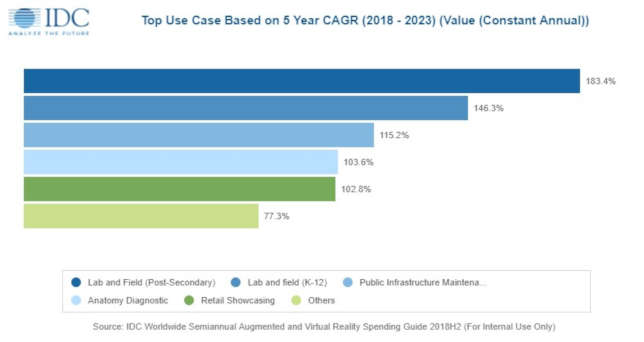Education Helping to Drive Massive Surge in AR & VR
Augmented and virtual reality will see explosive growth in the next five years, driving in large part by education — both K–12 and post-secondary.
According to a new forecast from market research firm IDC, AR and VR will grow at a compound annual growth rate (CAGR) of 78.3 percent for the next five years to reach nearly 10 times the scale it's expected to hit this year — from $16.8 billion in 2019 to $160 billion in 2023.
According to IDC, two of the top 5 use cases for growth are in the education sector:
-
Lab and field work in higher education, which is expected to grow at a CAGR of 183.4 percent over the forecast period; and
-
Lab and field work in K–12, which is expected to grow at a CAGR of 146.3 percent.

The United States will not lead in either spending or growth. China will spend the most on AR & VR technology during the forecast period. The United States will come in second. The two combined will account for about three-quarters of the world’s spending on this technology category.
The fastest growth will be seen in Western Europe, followed by the United States and China.
According to IDC: “Hardware will account for more than half of all AR/VR spending throughout the forecast, followed by software and services. Strong spending growth (189.2 percent CAGR) for AR viewers will make this the largest hardware category by the end of the forecast, followed by VR host devices. AR software will be the second fastest growing category, enabling it to overtake VR software spending by 2022. Services spending will be driven by strong growth from AR consulting services, AR custom application development, and AR systems integration.”
Further information can be found in IDC’s Worldwide Semiannual Augmented and Virtual Reality Spending Guide.